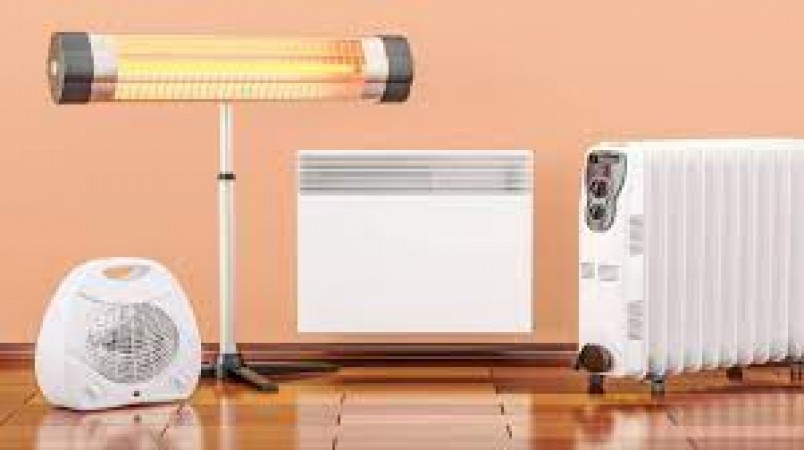
In the pursuit of a restful night's sleep, many individuals turn to the warmth offered by heaters. It's a common practice deeply rooted in the desire for comfort and a reprieve from chilly nights.
For some, the allure of warmth is irresistible. As the temperature drops, the idea of snuggling into a cozy bed enveloped in warmth becomes synonymous with a good night's sleep. This primal need for comfort often leads people to switch on their heaters, creating a snug environment that facilitates relaxation and rest.
Cold weather presents a unique set of challenges, prompting individuals to seek refuge in the warmth generated by heaters. Whether it's the biting cold of winter or a particularly chilly night, the need to counteract the external cold becomes a driving force behind the decision to sleep with heaters on.
While the warmth may seem inviting, it conceals potential health risks that are often overlooked.
Prolonged exposure to artificial heat can lead to dehydration. Heaters reduce the humidity levels in a room, contributing to moisture loss from the body. Dehydration, if unchecked, can result in discomfort, dry skin, and even respiratory issues.
The dry, heated air produced by heaters can adversely affect the skin and respiratory system. Skin may become dry and irritated, while the respiratory tract may suffer from increased susceptibility to infections. Understanding these health implications is crucial in making informed decisions about heater usage during sleep.
Beyond health concerns, there are serious safety risks associated with sleeping in a heated room.
Heaters, especially older models or those without proper safety features, can pose a risk of overheating. Extended operation without adequate breaks can lead to malfunctions, increasing the likelihood of accidents.
Leaving heaters unattended during sleep introduces the risk of combustion. Faulty wiring, malfunctioning components, or flammable materials in close proximity can turn a seemingly harmless device into a potential fire hazard.
While the intention is to enhance sleep quality, relying on heaters can have unintended consequences.
Artificially elevated temperatures in the sleeping environment can disrupt the body's natural circadian rhythms. The body relies on temperature fluctuations to regulate the sleep-wake cycle, and excessive heat can interfere with this delicate balance.
While warmth is comforting, prioritizing it over sleep quality can be counterproductive. The pursuit of a cozy sleep environment should not compromise the depth and restorative nature of sleep.
Acknowledging the risks prompts a search for safer alternatives and precautions.
Setting moderate temperatures on heaters and using them judiciously can provide the desired warmth without exposing individuals to prolonged risks. Striking a balance ensures comfort without compromising safety.
Routine checks and maintenance of heaters are crucial. Ensuring that heating appliances are in optimal condition reduces the likelihood of malfunctions and potential hazards.
Modern heaters come equipped with advanced safety features. Investing in these devices, which may include automatic shut-off mechanisms and temperature controls, adds an extra layer of protection against potential dangers.
Prevention is key, and education plays a vital role in ensuring individuals are aware of the potential dangers.
Community programs that focus on educating the public about the risks associated with sleeping with heaters on can have a significant impact. Workshops, seminars, and awareness campaigns foster a collective understanding of safety measures.
Introducing heater safety education in schools and workplaces is crucial. By targeting students and the workforce, these programs empower individuals to make informed decisions regarding heater usage, fostering a culture of safety.
As technology evolves, so do solutions that prioritize safety in sleep environments.
The advent of smart heaters introduces a new era of safety. These devices are equipped with sensors and algorithms that can detect anomalies, automatically shutting down if a potential hazard is detected.
Integrating heaters into home automation systems enhances safety. Automation allows for seamless control and monitoring, ensuring that heaters operate within safe parameters.
Dispelling common misconceptions is essential in promoting informed decision-making.
Addressing myths such as the belief that higher temperatures always translate to better sleep. Providing factual insights helps individuals make choices aligned with their well-being.
Offering practical tips, such as using a timer to limit heater operation, maintaining a well-ventilated room, and keeping flammable objects away from heaters, empowers individuals to create a safe sleep environment.
Summarizing the importance of finding a harmonious balance between warmth and safety.
Highlighting the need to balance the pursuit of comfort with an unwavering commitment to safety. A cozy sleep environment should not come at the expense of well-being.
Encouraging individuals to take responsibility for their choices by understanding the risks associated with heater usage. Informed decisions lead to safer sleep practices.
A glimpse into the future emphasizes the need for continued innovation in sleep technology. Striving for safer, more sustainable heating options ensures that individuals can enjoy a warm and secure sleep environment.
People of this zodiac sign will be very happy in their family life today, know your horoscope
Your day is going to be something like this today, know your horoscope